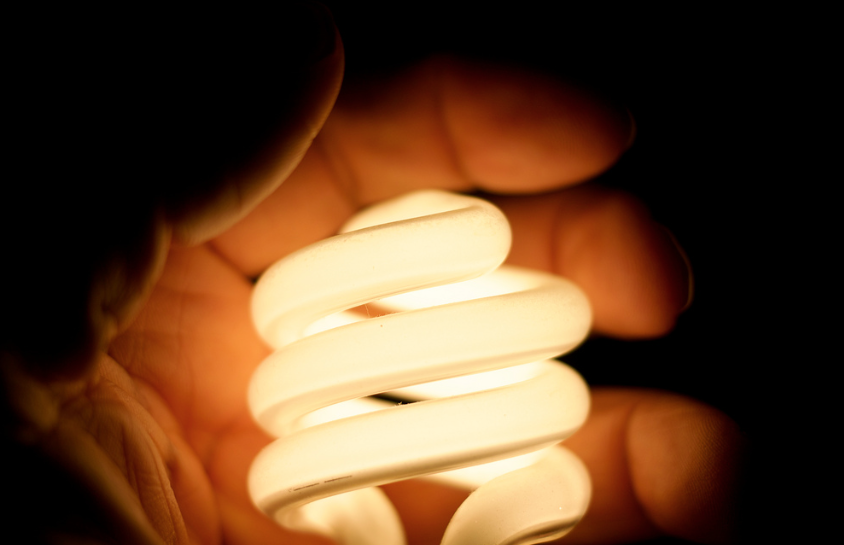
[Image above] Credit: Marcus Williams; Flickr CC BY-NC-ND 2.0
The sun in all its shining, infinite glory isn’t just a welcomed summertime friend (or sometimes serious adversary, if you burn easily like I do). It’s also one of our most readily available sources of natural energy to power our homes, vehicles, and machines.
But that energy varies depending on the time of day, so it’s crucial that we can capture and efficiently store it for use during off-peak times if we’re ever going to be able to leverage solar as our go-to power source over fossil fuels to reduce our growing carbon footprint.
And when it comes to solar energy storage, perovskite cells have been making news for their great potential for high efficiency and low cost—but, as we’ve reported before, perovskites aren’t known for their stability.
In fact, “stability is the biggest problem with perovskites and we have to come up with solutions,” Md. K. Nazeeruddin (Swiss Federal Institute of Technology Lausanne, Switzerland) said during his talk about perovskite solar cells and the challenges associated with developing them for efficient solar energy storage at this year’s Materials Challenges in Alternative and Renewable Energy conference in Clearwater, Fla.
To help bolster the efficacy and stability of perovskites, researchers from the University of Oxford in England reported earlier this year that they’re pairing perovskites with silicon to change the solar cell game.
The team—led by Henry Snaith, physicist at Oxford and leading perovskite researcher—says “it should be possible to make a silicon–perovskite ‘tandem’ device that is more than 25% efficient, higher than the performance of today’s commercially available silicon cells, which are about 17–20% efficient,” according to an MIT Technology Review article about the work.
This week, researchers from the Massachusetts Institute of Technology and other affiliated institutions in the U.S. and U.K. say they’ve “made significant inroads toward understanding a process for improving perovskites’ performance, by modifying the material using intense light,” according to an MIT News article.
The microscopic defects present in perovskites’ crystalline structure hinder the ability to convert light into electricity within a solar cell. And these defects, also call “traps,” can cause electrons to recombine with atoms before the electrons can reach a place in the crystal where their motion can be harnessed, the article explains.
But some of these defects don’t necessarily damage the perovskite beyond repair.
“What we’re finding is that there are some defects that can be healed under light,” says Samuel Stranks, MIT researcher and senior author on the work. Stranks is a Marie Curie Fellow jointly at MIT and Cambridge University in the U.K.
When the researchers applied intense light to the defective perovskites, they found that iodide ions—atoms stripped of an electron so they carry an electric charge—migrated away from the illuminated region, sweeping the defects in that region away in the process, the article explains.
“This is the first time this has been shown, where just under illumination, where no [electric or magnetic] field has been applied, we see this ion migration that helps to clean the film. It reduces the defect density,” Stranks says.
The team is focusing their research specifically on organic-inorganic metal halide perovskites, the release explains, which are considered promising for applications including solar cells, light-emitting diodes (LEDs), lasers, and light detectors. These types of perovskites excel in “photoluminescence quantum efficiency,” a property that’s key to maximizing the efficiency of solar cells.
But these types of perovskites have demonstrated highly variable, unpredictable performance when put to the test. The team is working to learn more about what causes these discrepancies and how to reduce them, with the “ultimate aim to make defect-free films,” Stranks says.
Defect reduction in thin-film perovskites has previously focused on electrical or chemical treatments, but “we find we can do the same with light,” Stranks says.
And this novel light-based processing offers some real advantages—one being that it eliminates the need for attached electrical contacts or submersion in a chemical solution. The treatment can be applied by simply turning on the light source, and could be “a way forward” for development of useful perovskite-based devices, Stranks says.
But the effects of the light-based processing technique aren’t permanent. “The challenge now is to maintain the effect long enough to make it practical,” Stranks says.
While some forms of perovskites are on-deck for commercialization as early as next year, this research “raises questions that need to be addressed, but it also shows there are ways to address the phenomena that have been limiting this material’s performance,” Stranks says.
“I think it is fascinating that illuminating the perovskites improves their photoluminescence efficiency by enabling iodine to move around and eliminate iodine vacancies,” adds Michael McGehee, a professor of materials science and engineering at Stanford University who was not involved in this research, in the MIT News article. “This research does not make solar cells better, but it does greatly increase our understanding of how these complex materials function in solar cells.”
The research, published in Nature Communications, is “Photo-induced halide redistribution in organic–inorganic perovskite films” (DOI: 10.1038/ncomms11683).
